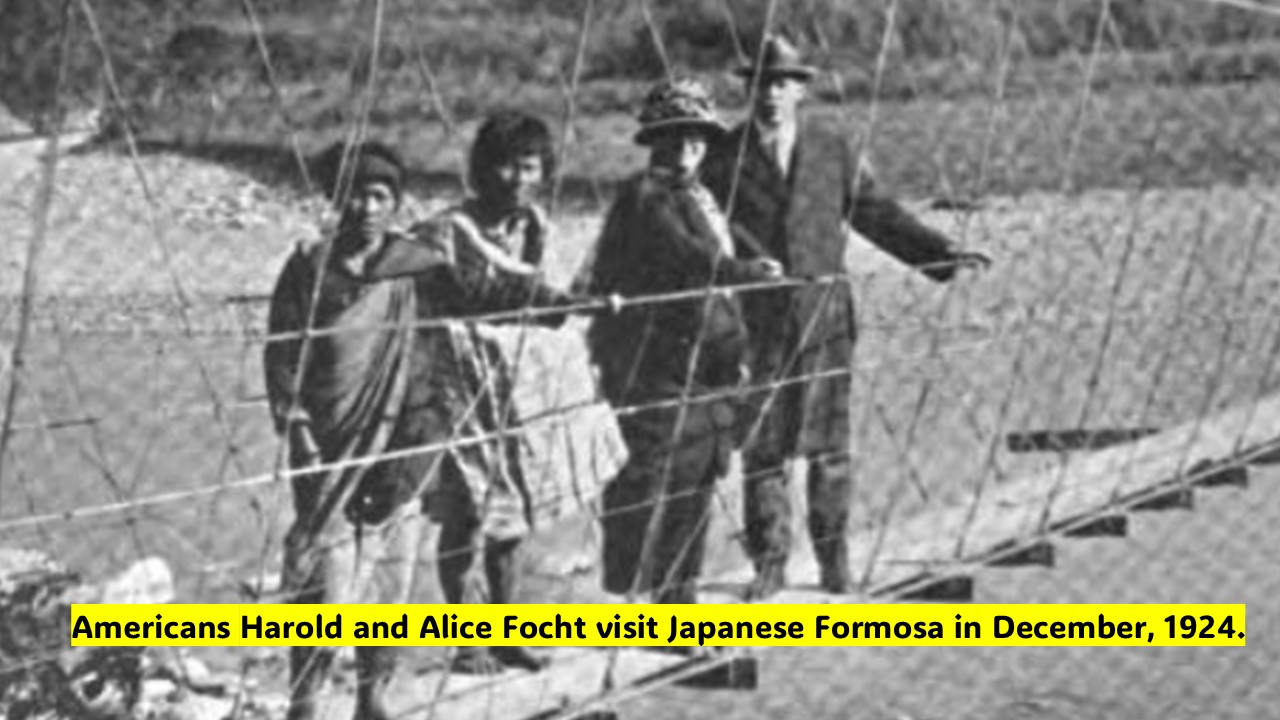S4-35 - FORMOSA 100 YEARS AGO: AMERICAN VISITORS IN JAPAN’S MODEL COLONY - DEC., 1924

Harold and Alice Focht. He was an educator, she came along to keep him away from the geishas (well, some said). Hear how two middle-aged Americans saw Taiwan at, arguably, the peak of the Japanese colonial era.
Lots of civilizing was on display – Asia’s longest bridge and the aboriginal show village of Kappanzan (beautiful modern-day Jiaobanshan). But happily, some local charms were also seen, including the unhealthy but persistent habit of chewing betel nuts, some minor disregarding of cleanliness, and local throngs gawking at big-footed Americans.
As a bonus, Eryk and John give away two brilliant ideas for modern-day tourism related to rail pushcarts.
Cover: via public domain Unfathomed Japan: A Travel Tale in the Highways and Byways of Japan and Formosa by Harold and Alice Focht
Click here for postcards of Mt. Kappan 臺灣蕃地 角板山)蕃人と蕃社の風光
Read: Jiaobanshan (Jiaoban Mountain) Park:
"Also known as Fuxing Park, Jiaobanshan (Jiaoban Mountain) Park is located on the southwest side of Mt. Jiaoban. Among the main attractions at the spacious park are the dozens of high maples that turn crimson red in autumn. The park is also home to old towering pines and plum trees that turn the park into a sea of pink during the blossom season. There are also two embracing banyans planted by Chiang Kai-shek and Madame Chiang. In 2003, the Taoyuan City Government invited 12 well-known sculptors, including Wu Hsuan-san, to create public art for a sculpture park and public art education area at Jiaobanshan Park. The highly creative sculptures blend with the local landscape and have contributed to the tourism appeal of this area."
Read: Jiaobanshan CKS Residence (角板山行館)
"Did you know that Chiang’s military command post was stormed by an army of animals? Jiabanshan military tunnel next to Jiabanshan Residence was built in 1963 as a contingency plan to ensure the president’s safety. It also serves as a command post if war broke out. Today, the intensity and sternness of the place has worn out. Instead of real enemies, a troop of animal figures comprised of clouded leopard, pangolin, Taiwan black bear and many other Taiwanese endemics surrounds the base, adding a fun element to this historical site. Entering the 20-meter long underground tunnel gives you a chill. A 100-meter wide interactive 3D mural reverses time back to 50 years ago. In front of the signs that say “Never Forget National Humiliation” and “Be Loyal to the ”, you now act as commander! Dodge bullets, look out for ambushing underwater soldiers, climb rope from an emergency helicopter, you name it! Welcome to the imaginary military world! The emergency footpath next to the tunnel leads back to Jiaobanshan Residence where history is told through graphic, audio and video materials. You can learn more about Chiang not only in politics but also his loving image when interacting with kids and family. The Sculpture Park next to Jiaobanshan Residence is the first of its kind in Taiwan which accommodates art installations of 12 world-class artists. The sculptures blend perfectly with the nature. Greeneries in the park include pine, cypress, plum and bamboo, creating unique seasonal scenery. The Japanese building next to the Visitor Center, the Camphor Lab is the last remaining Camphor Office in Taiwan. The old camphor tree that stands at the door is the only living witness of the once prosperous camphor industry in 19th century. The Camphor Exhibition Center (originally the Security Dormitory) nearby displays the process of extracting camphor and relative historical facts."
Below: A sail bogey or sail trolley is a wind-driven vehicle that runs along railway tracks. Via Wiki.
Below: "Camber Railway: sail-driven waggons"- Photograph from the early 1920s, reproduced in the 'Falkland Island Express' by Martin Coombs.
READ MORE: SAIL ON THE RAIL "Sail power has never found much popularity on railways. It is easy to see why - for a start, tacking into an opposing wind is going to be a very difficult business. One could also anticipate problems when a four-masted schooner-rig express engine encounters a tunnel."
Below: The reconstructed 'Spooner's Boat' on the Ffestiniog Railway
Clearly, the man in the pushcar below was a VIP "Person of Quality."
Do us a favor and rate/review the show! It really helps. Do it on Apple Podcasts or here on our website.
Write us with questions or ideas at formosafiles@gmail.com
AND THE BIGGEST REQUEST: tell others about this free, not-for-profit resource about Taiwan.
























